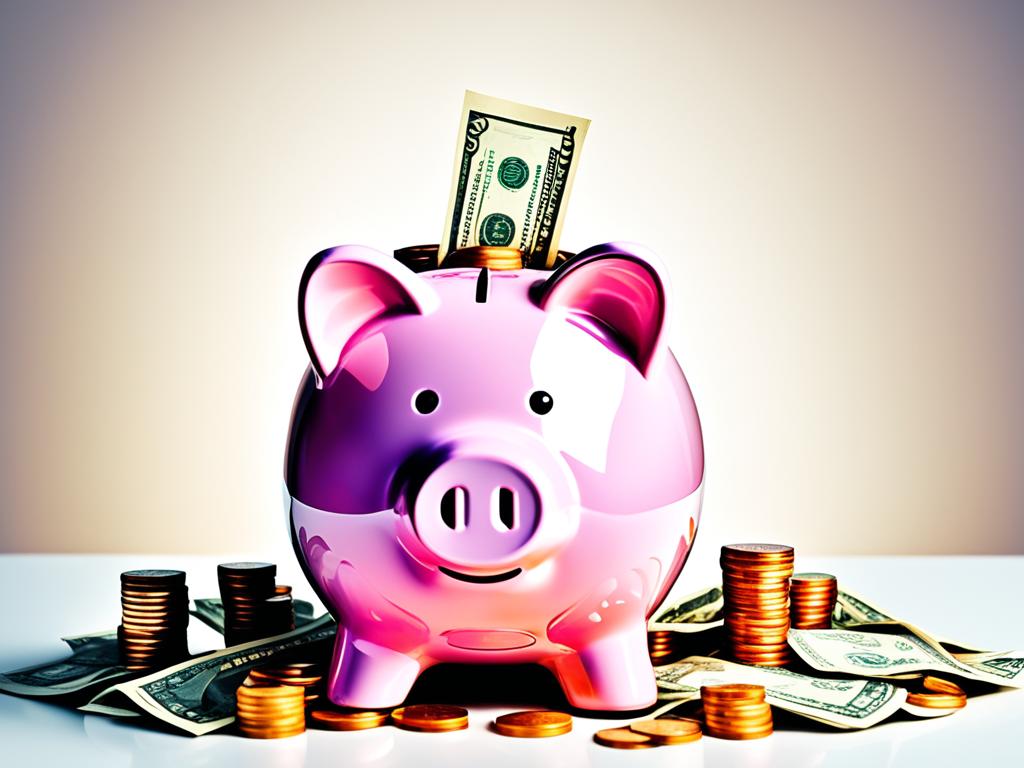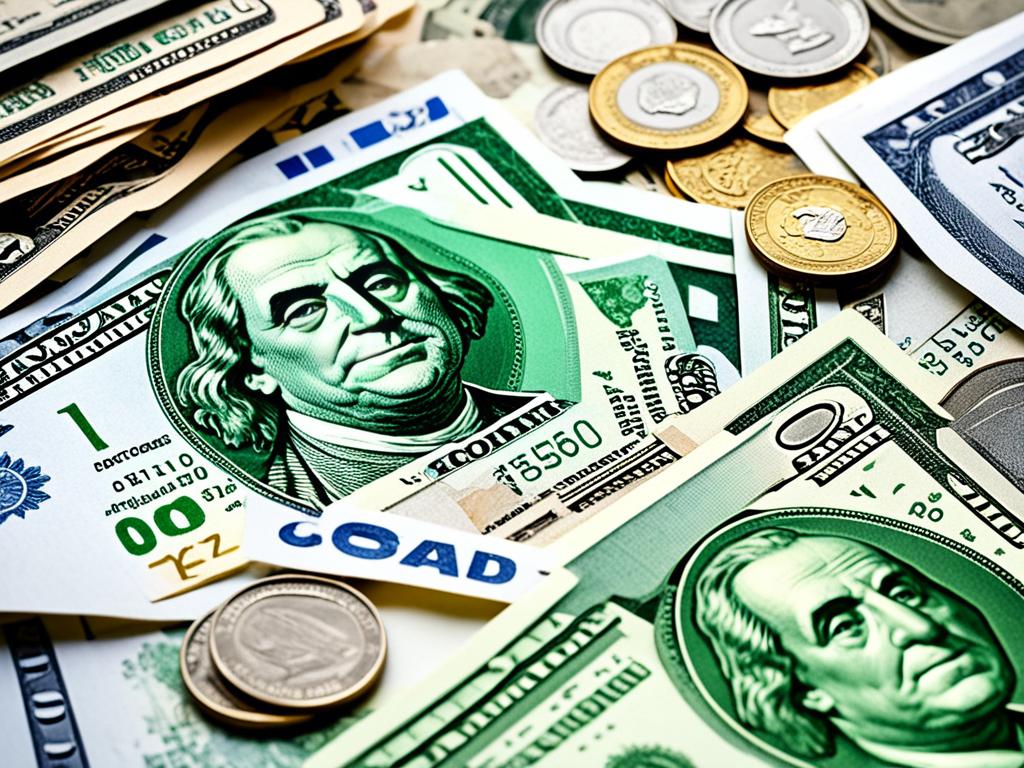
How to Build an Emergency Fund
In today’s uncertain economic climate, having a strong emergency fund is key. This guide will give you effective strategies and tips to build a solid financial safety net. An emergency fund is vital for personal finance planning. It protects you from unexpected expenses and ensures long-term financial security.
By the end of this article, you’ll know how to start building your own emergency fund. You’ll be ready to handle life’s surprises with confidence. Whether you’re getting ready for a rainy day or making a contingency plan, this guide has the strategies you need. It will help you achieve financial stability and peace of mind.

Understanding the Importance of an Emergency Fund
Starting with personal finance planning means setting up an emergency fund. This fund is for saving during sudden events like medical bills, car fixes, or losing a job. It helps keep your financial security safe and stops you from using credit cards or loans, which can lead to more debt.
Preparing for Unexpected Expenses
Life is full of surprises, both good and bad. An emergency fund is a way to be ready for these surprises. It helps you pay for sudden costs without messing up your budget. This way, you keep your finances stable and avoid the stress of unexpected money problems.
Financial Security and Peace of Mind
Having money for rainy days gives you financial security and peace of mind. You know you have money set aside for emergencies. This can reduce your financial worries and let you focus on your future personal finance planning goals.

How to Build an Emergency Fund
Building it, is key to financial security. By saving a part of your income, you can prepare for unexpected costs or job loss. Here are some tips to help you start saving today.
Establish Savings Goals
First, figure out how much you should save. Aim to save 3-6 months’ worth of expenses. Add up your monthly costs like rent, utilities, and groceries. Then, set a savings goal that fits your finances and timeline.
Prioritize Emergency Fund Contributions
See your emergency fund savings as essential, like rent or car payments. Automate your savings by setting up automatic transfers. This makes saving a habit and helps your fund grow steadily.
Adopt Budgeting Techniques
- Make a detailed budget to track your money. Cut back on non-essential spending to save more for your emergency fund.
- Use the 50/30/20 rule. This means 50% for necessities, 30% for fun, and 20% for savings and paying off debt.
- Try other money management skills, like meal planning and negotiating bills, to increase your savings.

By using these tips and saving regularly, you’re building a strong financial safety net. Stick with it, and you’ll be on your way to building wealth and reaching your financial goals.
Strategies for Saving Money Effectively
Building money for rainy days needs a smart saving plan. Start by using good budgeting techniques. Look at your spending and find ways to save more.
Budgeting Techniques
First, make a detailed budget to track your money in and out. Categorize your spending into must-haves and nice-to-haves. Then, find ways to reduce or eliminate unnecessary expenses. Think about eating in more, cutting entertainment costs, or canceling unused subscriptions.
Cutting Back on Expenses
There are more ways to save money effectively besides budgeting. Try negotiating your bills for things like cable, internet, or insurance to get a better deal. Also, look for ways to save on everyday expenses. Use coupons, buy in bulk, or choose store-brand products for groceries.
By using these money management skills and saving strategies, you can keep adding to your emergency fund. This will help you build wealth over time.

Determining the Right Emergency Fund Amount
Building an effective emergency fund is key to long-term financial security. Figuring out how much to save can be tricky. We’ll look at what to think about when setting your rainy day fund size.
Start by checking your monthly expenses. Look at what you spend on basics like rent, utilities, food, and transport. This helps you figure out the least you should save in your emergency fund.
Then, think about unexpected costs like medical bills, car fixes, or home upkeep. It’s hard to guess all possible contingencies. But, planning for these can help you decide how big your emergency preparedness fund should be.
Your financial stability is important too. If you have a steady job, you might need a smaller money for your rainy day savings. If your income is less stable or you have other savings, you might need more.
By looking at your finances and the risks you face, you can find the right balance. This ensures it covers unexpected costs without using all your savings.

The aim of it, is to be a safety net, not to save too much. Finding the right amount to save gives you peace of mind. You’ll know you’re ready for whatever comes.
Conclusion
Building money for rainy day is key to long-term financial stability and security. This guide has given you the steps and tips to start a solid emergency fund. It helps protect you from unexpected costs and lets you focus on your financial goals.
Starting to save or boosting your fund requires discipline and consistency. Building money for rainy days takes time, but with effort and determination, you can create a safety net for the future.
By focusing on how to build an emergency fund, personal finance planning, and good saving strategies, you’re on the path to financial security and readiness for emergencies. Start this journey and take charge of your financial future today.
FAQ
What is an emergency fund and why is it important?
It is money saved for unexpected costs like medical bills or car repairs. It’s key for financial security and peace of mind. It helps you handle surprises without using credit cards or loans, which can lead to debt.
How much should I save in my emergency fund?
Aim to save 3-6 months’ worth of expenses for your emergency fund. This amount can change based on your job security and financial needs. It’s crucial to strike a balance so your fund is enough but doesn’t use all your savings.
What are some effective strategies for building an emergency fund?
Good ways to grow your emergency fund include setting clear savings goals and budgeting for it. Automate your savings and cut expenses to add more to your fund.
How do I start building an emergency fund?
First, look at your finances and decide how much you can save monthly. Open a savings account for emergencies and set up automatic transfers. Increase your savings as your budget allows.
What should I do if I need to use my emergency fund?
If you use your emergency fund, start saving again quickly. Try not to use it for non-essential things. Aim to rebuild your savings to 3-6 months’ expenses to keep it ready for emergencies.



Emergency fund is very important cause it’s help a lot when essential things comes up.